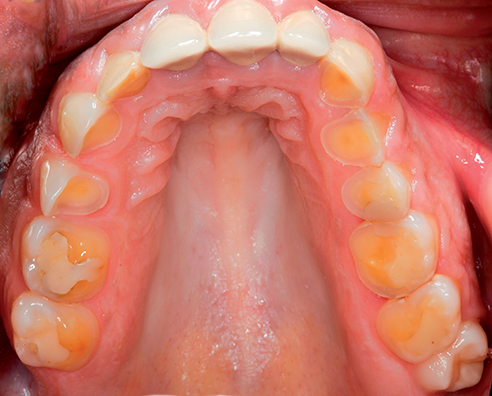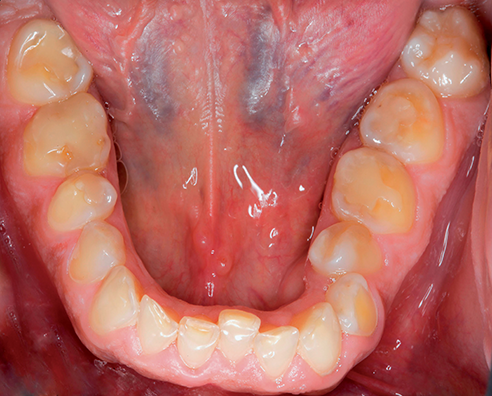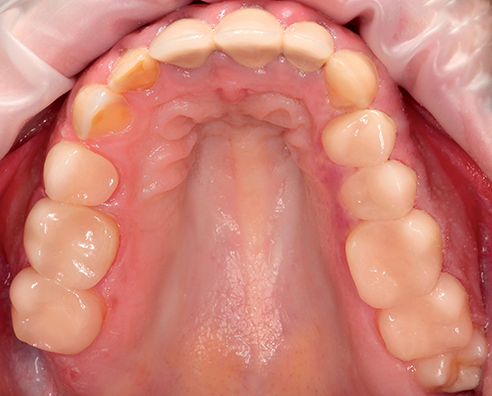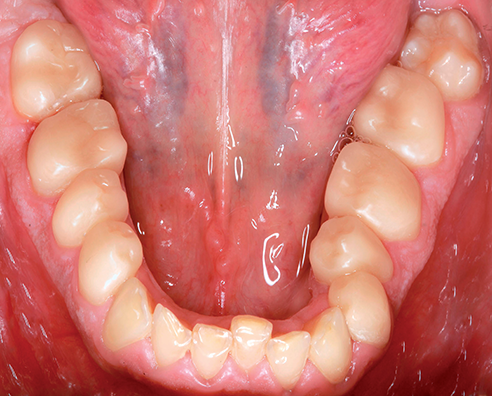Non-invasive restorations using hybrid ceramic
Dr. Saskia Preissner (Department for Conservative Dentistry and Preventive Dental Medicine at Charité University Hospital, Berlin, Germany) has almost two years of experience in clinical use of the VITA ENAMIC hybrid ceramic. In this time she was also able to gain insight with regard to non-invasive patient treatment. In the following interview, she reports on her experiences.
DV: Dr. Preissner, for how long have you been monitoring the clinical use of VITA ENAMIC at Charité University Hospital in Berlin?
Dr. Preissner: We were already able to treat our first cases with the material during the clinical pilot phase. As a result, we can draw on experience gained with patients who we have already been monitoring for two years. That is perhaps not long enough in order to draw any scientifically meaningful conclusions, however, all of our restorations have remained intact during this period. We are investigating the edge behavior of some restorations at the moment using a scanning electron microscope (SEM).
DV: In case documentation published in the "Open Dentistry Journal", you report on the treatment of a patient whose severely abraded dentition was restored using crowns. The wall thickness of the crowns in some cases was in the range of 0.5 mm. What leads you to expect that restorations with such thin walls will prove clinically viable in the long-term?
Dr. Preissner: As a practitioner, I would never dream of milling crowns to a wall thickness of 0.5 mm if sufficient space were available. However, in the case described, the initial situation was such that the patient had lost almost the entirety of her coronal tooth substance, and obviously did not wish to sacrifice even more substance as a result of crown preparations on 18 teeth. Following bite elevation treatment, we fitted her with crowns without needing to mill even a single tooth, and so were truly able to offer non-invasive treatment – if we disregard the few micrometers of tooth substance that were lost as a result of the acid-etching technique. It is precisely because of this non-invasive approach to therapy that I am confident that the biomimetic material properties of VITA ENAMIC will be sufficiently favorable to enable the patient to benefit from her restoration for many years to come, because as dentists, we want to retain tooth substance as far as possible.
DV: You have been monitoring this case for well over a year now, on the basis of regular checkups. How do you rate the clinical performance of restorations fabricated using the hybrid ceramic after they have been in situ for this length of time?
Dr. Preissner: They have in fact been in situ now for almost two years. The patient is as satisfied as ever. The cervical edges are all intact, and as they are supragingival for the most part, they are also readily accessible when performing oral hygiene at home. Moreover, we regularly polish the crowns during our checkups or during the course of professional dental cleaning.
DV: You have used the hybrid ceramic in particular in minimally-invasive and in non-invasive restorations. To what other indications is this material suited as a result of its particular properties and where could it prove additionally viable in the future?
Dr. Preissner: The indication area is large in principle, however, we are more specifically interested in those cases for which other materials are less suitable. We were wondering, for example, whether the idea of endodontic crowns could be given a new lease on life with the hybrid ceramic. In my opinion, endodontic crowns were quite a good approach for optimum restoration of severely damaged teeth, without resulting in a "barrel-hooped" appearance. This was why the root canal orifices were used as a retention aid. Unfortunately, these teeth had a greater tendency to fracture. Perhaps this was due to the high rigidity of the ceramics. The behavior of VITA ENAMIC, however, is similar to that of dentin. An in-vitro study is currently in progress with this matter, but regardless, we are treating selected patients with endodontic crowns who would otherwise face extraction as an alternative form of therapy.





